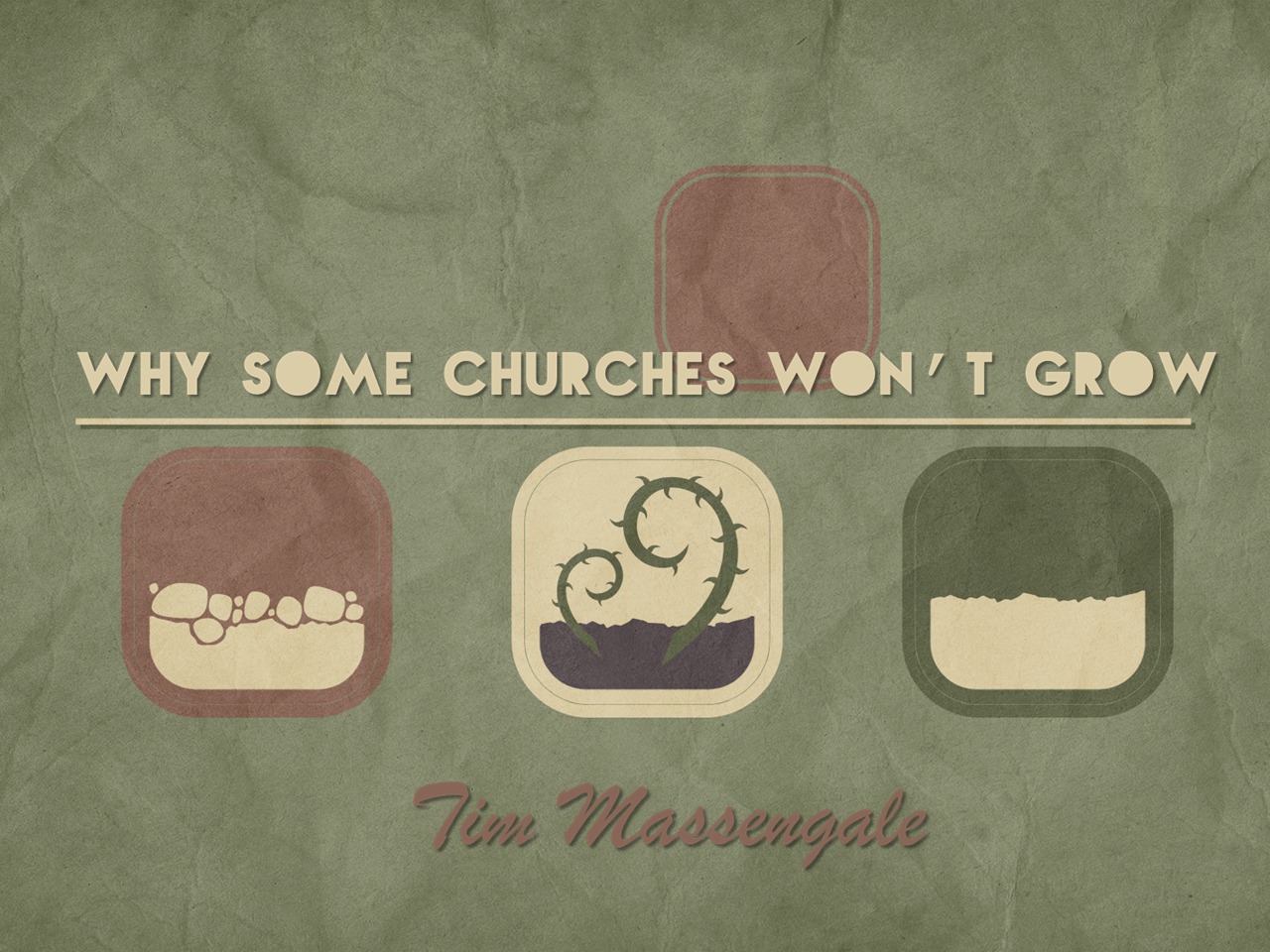“Over the past twenty-five years in working in the ministry of church growth, I have observed many churches in various stages and conditions. Some are growing, some are declining, and some are stagnant. There are certain patterns that tend to exist in non-growing (declining or stagnant) churches.”
To View Entire Article, Click Here
To Download the Article Directly to Your Computer, Click Here
To View PowerPoint, Click Here
Why Some Churches Won’t Grow
By Tim Massengale.
Over the past twenty-five years in working in the ministry of church growth, I have observed many churches in various stages and conditions. Some are growing, some are declining, and some are stagnant. There are certain patterns that tend to exist in non-growing (declining or stagnant) churches. Allow me to share the following seven reasons that some churches tend to stop growing:
1. Reaching the lost becomes a low priority in the church. Of course, if you were to ask them if evangelism was a high priority, all of them would say, ‘yes, absolutely!’ But in observing their calendar, their organization, and their various ministry activities, it quickly becomes evident that their actions do not match their words. What should have been the heartbeat of the entire church has diminished enormously as a priority in the minds of its members. Evangelism will be only one item of many on a very busy agenda. They have allowed non-outreach activities to continually push evangelism activities aside.
The solution is to develop a number of solid evangelism ministries, each with its own leader. These will be ministries such as visitor follow-up, home Bible study, door knocking, promotions, C.C.C., bus ministry, street evangelism, and others. The pastor should then strongly encourage all members to be faithfully involved in at least one organized evangelism activity. Finally, the pastor should meet with all evangelism ministry leaders each month to plan outreach activities for the upcoming months. When looking over the church calendar, you should find an equal or greater number of evangelism activities as social activities. Evangelism training should be a calendar priority as well.
2. Reaching the lost becomes a low priority for most of its members. Few of the members in non-growing churches are involved in any organized evangelism activity. And if you were to ask church members if they had witnessed or invited anyone to church during the past thirty days, the majority would whisper, ‘no.’ In addition, few members will have received any training in how to witness, how to teach a home Bible study, or how to follow-up on a church guest. Also, most members in non-growing churches would feel uncomfortable trying to explain to someone the plan of salvation from their Bibles.
The solution is to make a determined effort to return evangelism to it proper place in the minds of all church members. The importance of being a witness must be regularly emphasized. This is then accompanied with practical training in the art of witnessing, as well as how to teach a home Bible study. Training of this nature can be offered on regular Bible study night or as a special Sunday school class on Sunday morning. Occasionally Saturday seminars can be held for those who wish for more detailed instruction. Finally, at least once a year all the various evangelism opportunities in the church need to be presented during a major service and members should be given the chance to complete a commitment form indicating what evangelism areas they wish to be involved in that year. Evangelism ministry leaders should then be given these lists and they should work diligently to encourage all who committed to become actively involved.
To View Entire Article, Click Here
To Download the Article Directly to Your Computer, Click Here



